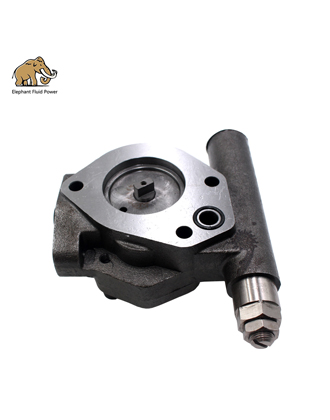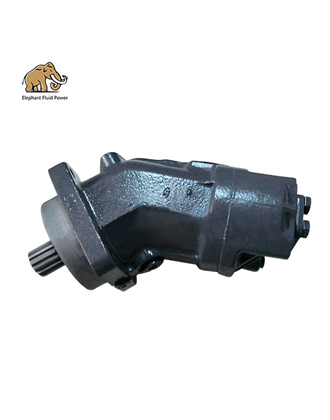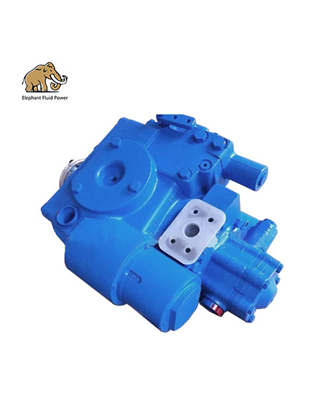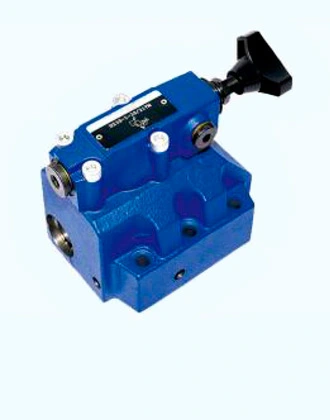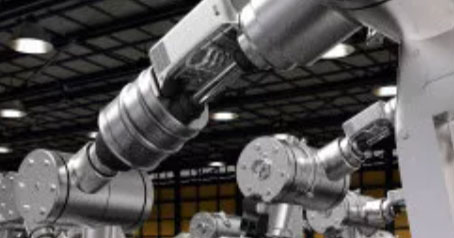After the nachi hydraulic pump installation and circulation flushing qualified, the hydraulic system must be adjusted and tested as necessary to make the necessary adjustments in accordance with the actual production process requirements under the premise of meeting the various technical parameters, so that it can operate normally under heavy loads.
Preparation before hydraulic system dispatch:
1. The hydraulic system that needs to be debugged must be passed after the circulation flushing is qualified before it can enter the commissioning state.
2. The hydraulically driven host equipment is all installed, and the moving parts are in good condition and can be inspected before they can enter the commissioning state.
3. The electrical equipment and lines that control the hydraulic system can only enter the commissioning state after all the installations and inspection are qualified.
4. Relevant personnel should be familiar with the technical documents required for commissioning, such as hydraulic schematic diagrams, pipeline installation drawings, system instructions, system commissioning instructions, etc. According to the above technical documents, check whether the pipeline connection is correct, whether the selected oil meets the requirements of the technical documents, whether the oil level in the mailbox reaches the specified height, and determine the location of each hydraulic component according to the schematic diagram and assembly drawing.
5. Remove the debris around the main engine and hydraulic equipment, and the debugging site should have obvious safety facilities and signs, and be managed by professionals.
6. The personnel participating in the commissioning should have a clear division of labor, unified command, the necessary training for the operator, and the walkie-talkie if necessary, to facilitate contact.
Specific debugging methods:
1. Start the hydraulic pump. Use the coupling between the motor and the hydraulic pump with your hand, confirm that there is no interference and rotate flexibly, click the motor, check whether the motor steering is consistent with the hydraulic pump steering sign, confirm the continuous jogging several times, press the motor start button without abnormality, and the hydraulic pump begins to work.
2. System exhaust. After starting the hydraulic pump, adjust the system pressure to about 1.0MPa, control the solenoid valve reversing direction respectively, so that the oil is circulated into each branch, twist the exhaust valve set on the pipeline, and discharge the gas in the pipeline; when the oil continuously overflows, close the exhaust valve. When the hydraulic cylinder is vented, the hydraulic cylinder piston rod can be extended to open the exhaust valve, the solenoid valve moves, the piston rod moves, the air is discharged, and when it rises to the upper stop point, the exhaust valve is closed. Open the exhaust valve on the other side, lower the hydraulic cylinder, discharge the air in the rodless cavity, and repeat the exhaust method above until the air in the hydraulic cylinder is drained.
3. System withstand voltage test. The system withstand pressure test mainly refers to the on-site pipeline, and the pressure test of hydraulic equipment should be carried out in the manufacturing plant. For hydraulic lines, the pressure of the pressure test should be 1.5 times the maximum working pressure. The working pressure ≥ 21MPa high pressure system, the pressure of the withstand pressure test should be 1.25 times the maximum working pressure. If the hydraulic pump of the system itself can reach the pressure value, it is not necessary to use an electric pressure test pump. The process of boosting should be carried out gradually in stages, not to reach the peak at one time, and each time the level is raised, it should be maintained for a few minutes and observe whether the pipeline is normal. It is strictly forbidden to operate the directional valve during the pressure test.
4. No-load debugging. After the completion of the pressure test, the system pressure is restored to the state of ready for commissioning, and then according to the content specified in the debugging instructions, the pressure, flow, speed, stroke of the system are adjusted and set, and the branch can be carried out in the order of manual and then electric, which also includes the setting of pressure relays and stroke switches. After the manual adjustment is completed, the no-load linkage test should be started after the equipment mechanical, electrical, and hydraulic independent no-load test is completed.
5. Load test operation. After the equipment starts to run, the load should be gradually increased, if the situation is normal, in order to carry out the maximum load test. After the maximum load test is successful, the working conditions of the system should be checked in time to check whether the operation is normal, and the pressure, noise, vibration, speed, temperature rise, liquid level, etc. should be comprehensively inspected, and a record should be made according to the requirements of the test.
For product quality and safety reasons, every nachi hydraulic pump is rigorously commissioned before it is launched, and Elephant Fluid Power company has a meticulous approach to perfection and has a wealth of experience.
The Nachi range of hydraulic pumps manufactured by Elephant Fluid Power are 100% compatible with original Nachi hydraulic pumps.
Nachi hydraulics calalog
Nachi pump distributor
Nachi hydraulic pump parts
Nachi piston pump distributor
Nachi pvd piston pump
Nachi hydraulic equipment
Nachi valve distributors
 French
French
 Portuguese
Portuguese
 Russian
Russian
 German
German
 Spanish
Spanish
 Japanese
Japanese
 Korean
Korean
 Irish
Irish
 Greek
Greek
 Turkish
Turkish
 Italian
Italian
 Danish
Danish
 Romanian
Romanian
 Indonesian
Indonesian
 Czech
Czech
 Afrikaans
Afrikaans
 Swedish
Swedish
 Polish
Polish
 Basque
Basque
 Catalan
Catalan
 Esperanto
Esperanto
 Hindi
Hindi
 Lao
Lao
 Albanian
Albanian
 Amharic
Amharic
 Armenian
Armenian
 Azerbaijani
Azerbaijani
 Belarusian
Belarusian
 Bengali
Bengali
 Bosnian
Bosnian
 Bulgarian
Bulgarian
 Cebuano
Cebuano
 Chichewa
Chichewa
 Corsican
Corsican
 Croatian
Croatian
 Dutch
Dutch
 Estonian
Estonian
 Filipino
Filipino
 Finnish
Finnish
 Frisian
Frisian
 Galician
Galician
 Georgian
Georgian
 Gujarati
Gujarati
 Haitian
Haitian
 Hausa
Hausa
 Hawaiian
Hawaiian
 Hebrew
Hebrew
 Hmong
Hmong
 Hungarian
Hungarian
 Icelandic
Icelandic
 Igbo
Igbo
 Javanese
Javanese
 Kannada
Kannada
 Kazakh
Kazakh
 Khmer
Khmer
 Kurdish
Kurdish
 Kyrgyz
Kyrgyz
 Latin
Latin
 Latvian
Latvian
 Lithuanian
Lithuanian
 Luxembourg
Luxembourg
 Macedoniar
Macedoniar
 Malagasy
Malagasy
 Malay
Malay
 Malayalam
Malayalam
 Maltese
Maltese
 Maori
Maori
 Marathi
Marathi
 Mongolian
Mongolian
 Burmese
Burmese
 Nepali
Nepali
 Norwegian
Norwegian
 Pashto
Pashto
 Persian
Persian
 Punjabi
Punjabi
 Serbian
Serbian
 Sesotho
Sesotho
 Sinhala
Sinhala
 Slovak
Slovak
 Slovenian
Slovenian
 Somali
Somali
 Samoan
Samoan
 Scots Gaelic
Scots Gaelic
 Shona
Shona
 Sindhi
Sindhi
 Sundanese
Sundanese
 Swahili
Swahili
 Tajik
Tajik
 Tamil
Tamil
 Telugu
Telugu
 Thai
Thai
 Ukrainian
Ukrainian
 Urdu
Urdu
 Uzbek
Uzbek
 Vietnamese
Vietnamese
 Welsh
Welsh
 Xhosa
Xhosa
 Yiddish
Yiddish
 Yoruba
Yoruba
 Zulu
Zulu

